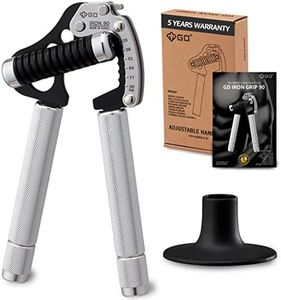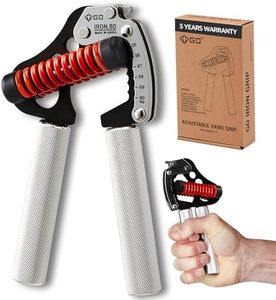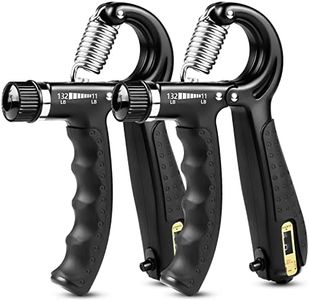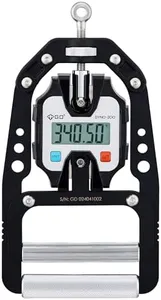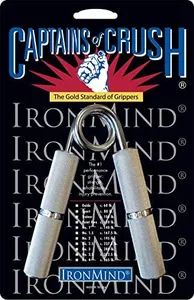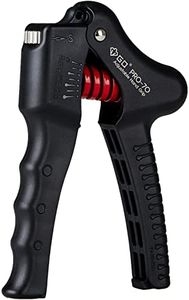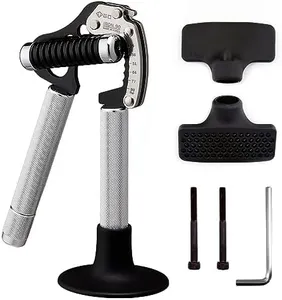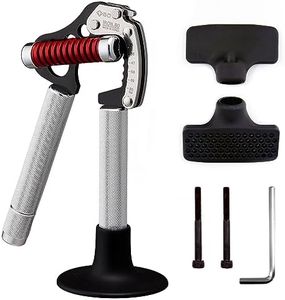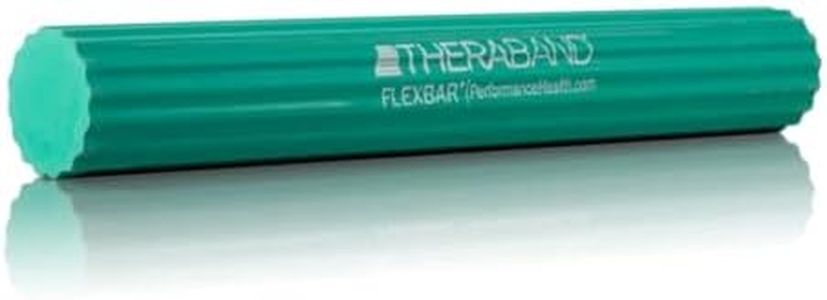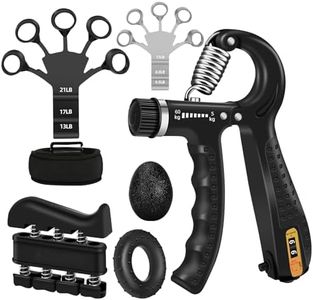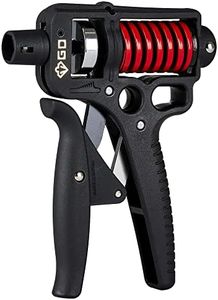We Use CookiesWe use cookies to enhance the security, performance,
functionality and for analytical and promotional activities. By continuing to browse this site you
are agreeing to our privacy policy
10 Best Grip Strengtheners
From leading brands and best sellers available on the web.Buying Guide for the Best Grip Strengtheners
Choosing a grip strengthener is all about understanding your fitness goals and current hand strength. Whether you're looking to improve your overall hand health, recover from an injury, or boost your athletic performance, picking the right grip strengthener can help you meet your needs. Pay attention to how the device feels in your hand and the kind of resistance it offers. It's wise to start with something that challenges you, but doesn't cause discomfort or pain. Make sure the grip strengthener is comfortable to use and made from durable materials if you plan to train regularly. The best choice is the one that matches your current ability but also allows for progression as you get stronger.Resistance LevelThe resistance level is essentially how hard it is to squeeze and operate the grip strengthener, usually measured in pounds or kilograms. This is crucial because it determines how effective your workout will be and whether you risk strain or injury. Devices typically range from very light resistance, suitable for rehab or beginners, to very heavy, which is more suitable for advanced users or athletes. Lower resistance (below 50 lbs) is great for people who are just starting, elderly users, or those recovering from injury. Moderate resistance (50-100 lbs) is ideal for general fitness and regular users, while high resistance (over 100 lbs) is best for those wanting to build significant strength, such as rock climbers or weightlifters. To pick the right resistance, honestly assess your current grip strength and your goals. If you're unsure, start lower and move up gradually.
AdjustabilityAdjustability refers to whether the grip strengthener allows you to change the resistance as you get stronger. Adjustable models are useful because you can make them harder to squeeze as your strength increases, so you don't need to buy new devices repeatedly. Some use a dial or knob, while others have interchangeable springs. If you want long-term value or if several people will use the device, look for an adjustable grip strengthener. If you really care only about a specific level of resistance, a fixed model can also work.
Grip Comfort and MaterialGrip comfort and material deal with how the handles feel in your hand and what they’re made from. Comfort is important because you'll be using the device repeatedly, and rough or slippery handles can be unpleasant or even cause blisters. Handles are commonly made from plastic, rubber, foam, or metal. Softer materials like rubber or foam make for a cushier grip and are kinder to sensitive hands, while harder materials like metal last longer and may be better for sweaty hands. Choose what feels comfortable and secure when you squeeze—this can make it much easier to stick with your training.
Grip Type (Design)Grip type describes the physical design of the grip strengthener. Common types include spring-loaded handles, ring-style grips, and individual finger exercisers. Spring-loaded handles work the whole hand and are best for overall grip strength. Ring-style grips are compact and simple, great for portability and quick exercises. Finger exercisers allow you to strengthen each finger individually, helpful for musicians or those needing targeted training. Think about your main goal—if you want full-hand strength, go for traditional handles; for finger precision, choose finger exercisers. Your use case should steer you to the right type.
Size and PortabilitySize and portability refer to how big the grip strengthener is and whether it’s easy to carry around. Compact, lightweight options are best if you want to take your exercise device to work, school, or while traveling. Larger strengtheners or those with lots of parts may offer more features but are not as convenient to carry. If you're planning to train on the go, pick something small that fits in your pocket or bag. For home use, size is less crucial.
